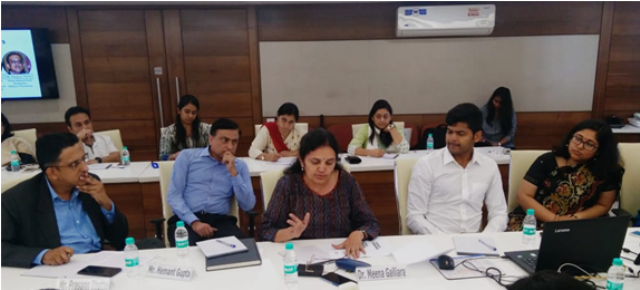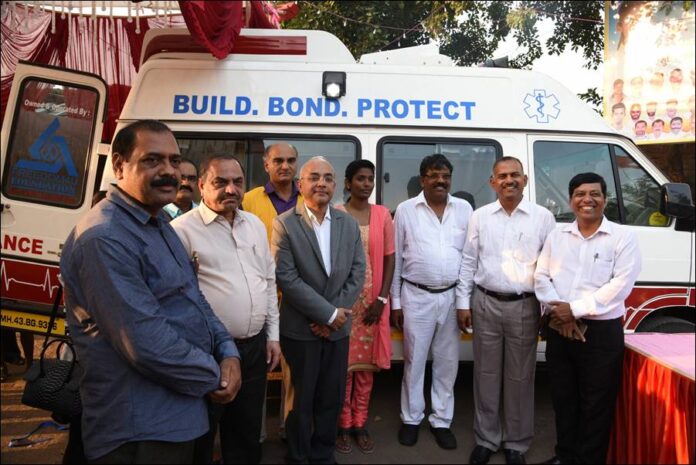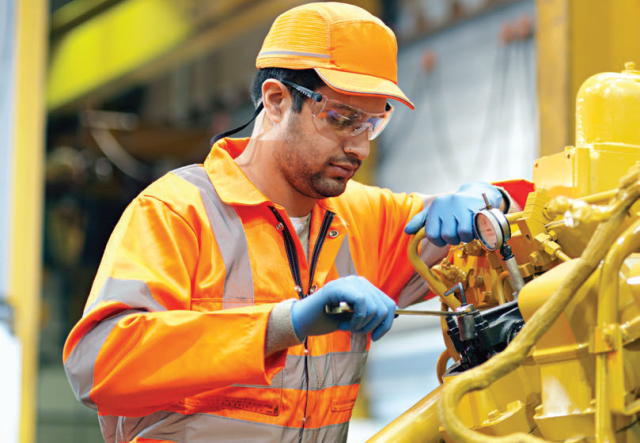Corporate Social Responsibility (CSR) has become globally a key issue of concern for contemporary businesses. The CSR construct for India has been redesigned with the inclusion of CSR under Section 135 of the Companies Act 2013. The covert intention of CSR regulations was to engage corporates in solving complex social problems.
Schedule VII of the new CSR rules 2014 has specified 11 broad areas of concerns of the Government wherein it requires private participation to supplement its efforts in carrying out activities needed for twin objectives of uplifting people and saving the environment. Since 2014, the industry has been making efforts in this direction through direct and indirect channels, and spending money in various activities of CSR to fulfill the regulatory requirements.
Open dialogue
BSE Institute organised a Roundtable on: CSR Mosaic – An Open Dialogue in August to assess what objectives of CSR regulations were achieved and to what extent. Invitees for the roundtable included people from academia, industry and the NGOs. More than 35 people attended the roundtable and shared their thoughts.
Dr Shariq Nisar, Head Research BSE Institute highlighted the importance of roundtables like this where important national issues could be discussed openly between different stakeholders. He also emphasised that it is pertinent to review Schedule VII beyond mere ‘spent’. This kind of mapping is expected to help the companies to do an informed planning of their spending for the future and guiding the flow of effort and funds into the areas being considered important by society at large.
Moderator Payal Agarwal, Country Head, International Cooperative and Mutual Insurance Federation (ICMIF) explained the agenda. The roundtable had four main speakers:
- Prof Vandana Tripathi – Asst. Professor ITM Business School Kharghar
- Meena Galliara – Director Jasani Center of Social Entrepreneurship, NMIMS
- Hemant Gupta – MD & CEO, BSE Sammaan CSR Ltd.
- Prasann Thatte – Head Monitoring – Evaluation, Reliance Foundation
Prof. Vandana highlighted the important rules related to CSR expenditure in India and the areas which are mandated by government for CSR purposes. Following table from her presentation highlights year-wise expenditure on CSR.
CSR Spending in India (Number of Companies)
|
2016-17 |
2015-16 |
2014-15 |
| Zero Spent |
346 |
9219 |
8833 |
| Less Than Prescribed |
3718 |
6268 |
4001 |
| More Than Prescribed |
2203 |
3380 |
1633 |
| Exactly as Prescribed |
19 |
317 |
477 |
(Source: National CSR Portal)
Prof. Vandana analysed the findings with the help of primary data she had collected from academicians, industry practitioners and NGOs heads (all together 93). She shared with the participants her aim to develop a methodology for rating corporates based on their proximity and departure from the set norm.
CSR spend
Dr Meena Galliara pointed out that discussions on CSR spend is like that of “poverty figure” where various agencies/ organisations present different figures as there is no homogeneity adopted for computing the same. She informed the participants that Government of India has undertaken the lead to be more proactive by creating the National CSR portal however data for 2016-17 is not updated yet. While comparing FY 14-15 to FY 15-16, one may note a 28% increase in number of companies contributing to CSR, but she cautioned that this should not be the only metrics adopted to measure performance. One must move beyond the quantitative approach of CSR spend to ‘How’ it is getting spent. It would further determine as to whether enforcement is further required, or an enabling environment will be the future.
She further commented on the monies spent sector wise and pointed out that opinion taken from public perception matches in the area of health, education and environment. She elaborated that ‘distorted information’ could be avoided by segregating the different thematic areas and rigorously examining compliances with schedule VII.
Opinion gathering
She was of the view that some parts of mismatch with the Govt data could be attributed to the low sample size hence an attempt should be made to make it broad-based. To achieve this, she suggested that opinions should be gathered from various states. It will help in removing the geographical concentration bias of the sample.
She suggested to give more weightage to opinions gathered from the corporate executives who are the real decision makers. Other stakeholders such as academicians or consultants’ views may be reflecting the best of both the worlds however it should not be weighed equal to that of a corporate. She shared that true value creation on CSR research could be done by reaching out to the Independent Directors of the CSR committee. Finally, she recommended concentrating on 2-3 leading sectors so that the recommendations can be easily implemented.
Macro level outlook
Hemant Gupta – MD & CEO, BSE Sammaan CSR Ltd., said that macro level outlook of CSR spent is one aspect, which has been considered but the local needs must be identified and incorporated. Although the spending according to norms would be more in sync as they reflect the majority opinion, we can only nudge the corporates to fall in line as nowhere it is mandated that such considerations are required.
If you break the jigsaw puzzle, you can identify 3 key stakeholders viz Government, Corporate and NGOs. Corporates can be classified depending upon their level of involvement and approach to CSR:
- Genuine Intent – based on needs assessment
- Cheque based philanthropy / compliance
- Indifferent
- Leader driven with their interests of sectors
CSR decision making in corporates only partially emerges from the location of the factory and a lot is from the head office therefore it would be pertinent to look at the CSR spent both locally and nationally.
NGO angle
From the NGO perspective, it is important to note that dealing with corporates is different due the way they communicate and demand reports to meet the regulatory requirements. He also pointed out the difference in the way corporates deal with NGOs while conducting (too strict) due diligence. He differentiated amongst the donors (CSR funds and traditional donors) and shared that traditional donor agencies tend to continue their association over a certain number of years while the corporates tend not to do it for longer period (primarily time horizon is 12 months).
Unfortunately, the other thing which is demanded of NGOs is brand building which other philanthropists do not require. Therefore, one can say that the role of NGOs is changing and requires capacity building. He said that the above research would be useful to assess CSR implementation at the Macro level.
Drop in the ocean
He emphasised that total CSR budget spent is still a drop in the ocean compared to government spends on social development sector. Working closely with government, he has been able to observe their struggle in terms of grappling with some of the lacunae that the CSR Act has thrown up.
Schedule VII is very constraining in terms of whether the needs assessment should drive CSR initiative or Schedule VII. He cited the example of Kerala Relief Works and shared that a lot of companies could have contributed their products/ services directly during Kerala Relief and have it counted as CSR however since that is not permitted under Sec 135, it is not being done.
He further elaborated that Regulators are trying multiple ways to enhance performance. They are open to suggestions. He also pointed out to the need for collaboration among stakeholders so that extensive impact is created of such interventions.
BSE Sammaan, as an enabler in the CSR ecosystem is a part of the discussions in the Government as well as fostering collaboration. Sammaan is also assisting Corporates in making more effective CSR investments by offering its family of 1,300 NGOs to them.
Exact definitions
Prasann Thatte – Head Monitoring – Evaluation, Reliance Foundation said that one of the challenges is to exactly define what a CSR project really is. When concept notes are written, a corporate does not necessarily think about these ‘buckets’ of schedule VII. A Corporate usually responds to the need (complex and multiple) which may not be necessarily in black and white and response therefore is usually a bouquet of interventions combining different sectors.
He further elaborated that Swachh Bharat Kosh received meagre funds but the bright aspect here is that corporates have taken the onus to invest in sanitation directly instead of simply making a cheque transfer to a government fund. Corporates should bring in their technical expertise instead of merely being financiers.
He emphasised the fact that large corporates usually follow long-term strategies for development and set aside funding commitment for 5 years or more. Hence it may be difficult for them to switch to any thematic area other than those already decided, as against the companies with smaller ticket size who can shift easily. He also mentioned that for corporates, it makes more sense to align themselves with national programmes viz Skill India/ Digital India as these programs reflect the national development priorities and any progress on these fronts takes the country closer to achieving the SDGs.
He concluded that it would be pertinent to investigate CSR funds spent in the Aspirational Districts.
Other points discussed
- Currently data is very skewed and interventions from government and other pressure groups could demand more transparency.
- Benchmark the CSR funds vis a vis country’s current level of competitiveness on different globally acceptable index such as Human Development Index, Sustainable Development Goals etc. It would provide comprehensive approach towards needs assessment as well as add to the credibility to the measure.
- Determination of the norm is critical to the research. Adding more variables such as needs assessment etc would be strengthening the basis of the index. Elaboration upon the existing indices would benefit the stakeholders to derive greater value. The index must consider the quality of CSR programmes even though the spent may not necessarily be 2% of net profit.
- This index appears to be invaluable to NGOs to determine their own strategies of strategic collaboration with corporates. It would enable them to identify more with the local needs, national priorities and the corporate interests. Such aggregation of information would layout the approaches on how to bring local needs in defining any program interventions. This would essentially involve keeping the index simple so that grassroots NGOs too can comprehend it easily.
- CSR should be reviewed from a policy perspective as to what are the priority areas for government spending. It would be observed that only 2 priority areas of Health and Education are vehemently pursued. The other issues could be dealt with governance reforms and not through CSR alone. For eg, Gender Inequality should be dealt more with as creating an enabling environment.
- Volatile situations in different geographical locations may be limiting the CSR funds access therefore how would that be accounted for.
Outcome of the Roundtable
Conclusion was reached on redefining the scope, boundary and methodology for building the index. It needs to be broad based to become largely acceptable. It needs to use both quantitative (CSR spent etc.) and qualitative variables (CSR Policy review etc). Involvement of stakeholders particularly industry experts and others involved in addressing the challenges faced by CSR practitioners is imperative to arrive at a consensus as to what finally will be the construct of the index.
Views of the author are personal and do not necessarily represent the website’s views.
Thank you for reading the column until the very end. We appreciate the time you have given us. In addition, your thoughts and inputs will genuinely make a difference to us. Please do drop in a line and help us do better.
Regards,
The CSR Journal Team
Subscribe



















